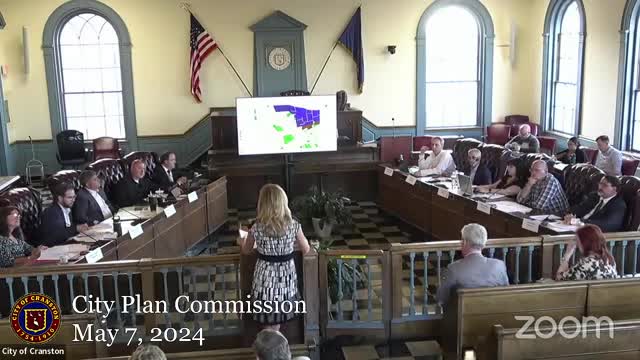Janice Cataldo opposes Cranston zoning change citing schools and infrastructure concerns
May 08, 2024 | Cranston City, Providence County, Rhode Island

This article was created by AI summarizing key points discussed. AI makes mistakes, so for full details and context, please refer to the video of the full meeting. Please report any errors so we can fix them. Report an error »

The City Plan Commission meeting held on May 7, 2024, in Cranston focused on significant community concerns regarding proposed zoning changes in the Sage Drive area. The meeting began with public comments, where resident Janice Cataldo emphasized the importance of allowing remote participants to voice their opinions.
Cataldo expressed her opposition to the proposed zoning changes, despite their alignment with the comprehensive plan. She highlighted four critical issues affecting Cranston: education, tax base, housing, and infrastructure. Cataldo noted that the Department of Education had determined that Orchard Farms School should serve a maximum of 360 students, yet it currently accommodates 466. She pointed out the substantial financial implications of educating children in the area, estimating an annual cost of $38,000 per family, which significantly impacts the city’s budget, with schools accounting for nearly 60% of expenditures.
Infrastructure concerns were also raised, particularly regarding the potential impact of new housing developments on water, sewer systems, and traffic. Cataldo mentioned recent flooding in Alpine Estates and referenced studies recommending low-density zoning in watershed areas to protect water quality. She provided anecdotal evidence of traffic congestion, noting that a count of vehicles over a 90-minute period yielded 400 cars, while a 2016 traffic analysis indicated an average of 73,000 vehicles daily on Scituate Avenue, one of the busiest routes in Cranston.
The meeting underscored the community's apprehension about rapid development in Western Cranston, a concern that has persisted for over a decade. As discussions continue, the City Plan Commission will need to weigh these community concerns against the proposed zoning changes and their potential long-term effects on the area.
Cataldo expressed her opposition to the proposed zoning changes, despite their alignment with the comprehensive plan. She highlighted four critical issues affecting Cranston: education, tax base, housing, and infrastructure. Cataldo noted that the Department of Education had determined that Orchard Farms School should serve a maximum of 360 students, yet it currently accommodates 466. She pointed out the substantial financial implications of educating children in the area, estimating an annual cost of $38,000 per family, which significantly impacts the city’s budget, with schools accounting for nearly 60% of expenditures.
Infrastructure concerns were also raised, particularly regarding the potential impact of new housing developments on water, sewer systems, and traffic. Cataldo mentioned recent flooding in Alpine Estates and referenced studies recommending low-density zoning in watershed areas to protect water quality. She provided anecdotal evidence of traffic congestion, noting that a count of vehicles over a 90-minute period yielded 400 cars, while a 2016 traffic analysis indicated an average of 73,000 vehicles daily on Scituate Avenue, one of the busiest routes in Cranston.
The meeting underscored the community's apprehension about rapid development in Western Cranston, a concern that has persisted for over a decade. As discussions continue, the City Plan Commission will need to weigh these community concerns against the proposed zoning changes and their potential long-term effects on the area.
View full meeting
This article is based on a recent meeting—watch the full video and explore the complete transcript for deeper insights into the discussion.
View full meeting